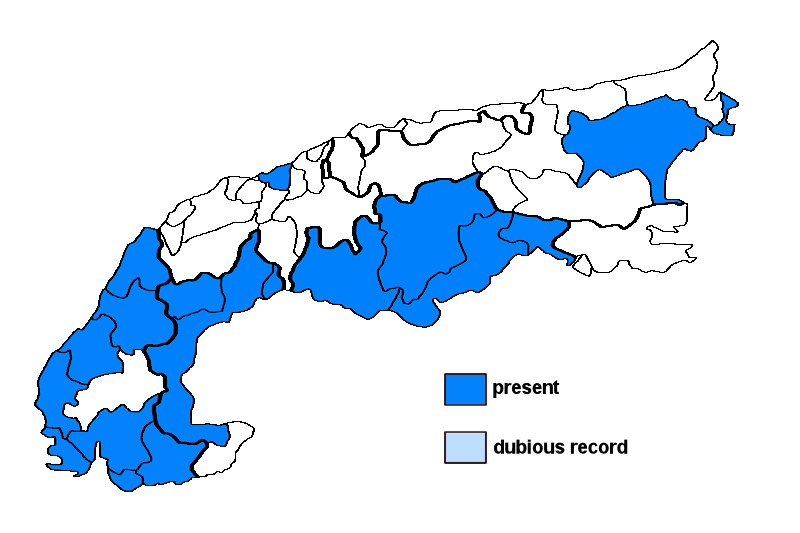Lecania rabenhorstii (Hepp) Arnold
Syn.: Biatorina ceramonea A. Massal., Biatorina rabenhorstii (Hepp) A. Massal., Lecania alborubra B. de Lesd., Lecania algarbiensis Cout., Lecania erysibe (Ach.) Mudd var. ceramonea (A. Massal.) Zahlbr., Lecania erysibe (Ach.) Mudd var. rabenhorstii (Hepp) Mudd, Lecaniella rabenhorstii (Hepp) Jatta, Patellaria rabenhorstii Hepp
Lichenised.
Substrate: calciferous rocks, intermediate rocks (such as calciferous schists)
Altitudinal range: from the mesomediterranean belt (potential vegetation: evergreen broad-leaved forests dominated by Quercus ilex) to the montane belt (potential vegetation: deciduous forests dominated by Fagus sylvatica and closed coniferous forests with Picea abies)
Note: closely related to L. inundata; on more or less calciferous substrata, including concrete, tiles, cement etc., also in non-natural situations such as on walls in villages; apparently more frequent in the Southern and Western Alps.
Austria: Steiermark; Burgenland; Switzerland: Schwyz; France: Alpes-de-Haute-Provence; Alpes-Maritimes; Drôme; Isère; Savoie; Haute-Savoie; Vaucluse; Var; Italy: Friuli; Veneto; Trentino Alto Adige; Lombardia; Piemonte; Valle d'Aosta;





